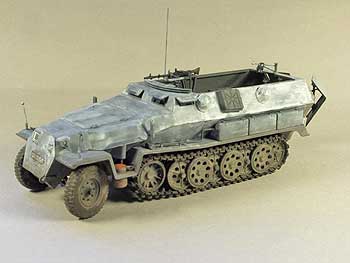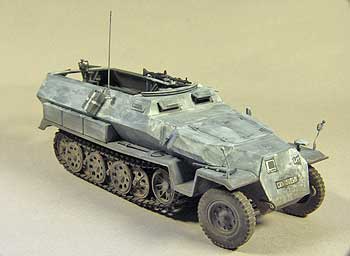|
|
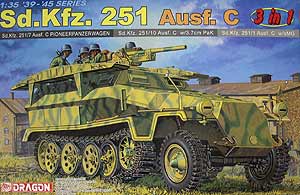 |
| Prologue |
Nice project straight from the box
Sd.Kfz. 251 series half-tracks are most probably the best-known German half-tracks from WW2. "251" served in all fronts, from frozen Artic tundra in Russia to hot African desert and from Normandy bocage hedgerows to mountains of Italy and Balkans.
"251" was neglected by model manufacturers for many years, only kits we had were the old and not-so-good Tamiya kit from 1970's and equally terrible Nitto kit. Tamiya released some Ausf D 251's in early 1990's, but in todays standards those kits are quite challenging as well. AFV Club from Taiwan and Dragon from China started to release Sd.Kfz. 251 kits some years ago, and by today, there does not seem to be an end for new releases - which should make us modelers quite happy!
Sd.Kfz. 251 project
I had had quite a long break from model-building: studies abroad, two kids, new jobs and so on, so when I started this project I wanted something easy that would make a great model without too much aftermarket stuff. Dragon Sd.Kfz. 251 Ausf. C 3-in-1 kit contains lots of extra stuff and has many optional parts, so it was an easy selection.
| The kit |
251/1 m. sMG, basic half-track with heavy machine gun and optical sights
251/7 pioneer version, with small assault bridges and storage for pioneer equipment
251/10 platoon leaders vehicle with 3.7cm PaK gun
Actually the kit has 4 different options, as one can also build basic Sd.Kfz 251 from it. Box contained also extra weapons, pioneer tools and figures.
After some hard thinking (and checking through reference material) I choose to build the version with heavy machine-gun. Pioneer version would have been nice as well, but after some measuring I soon found out that the bridge parts were under-sized and not very well detailed. The gun from version /10 will be saved for my next project.
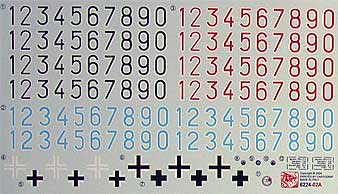
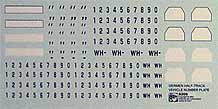


| The build |
 Suspension and tracks
Suspension and tracks Starting from the suspension as per instructions I made my first mistake. Instructions had a printing error, and I managed to glue the idler wheels wrong way. It was found out soon enough, the glue hadn't set yet and the mistake was easy to fix. Somehow the printing error could not be found from any other Dragon 251 instruction sheet.
Wheels were not very well detailed when compared to pics of originals, but I decided not to fix it but cover it up.
 Biggest problem was the drive sprockets; they lacked guide teeth rollers, a fault shared by all Dragon 251 series kits. Luckily the mistake does not show from completed model.
Biggest problem was the drive sprockets; they lacked guide teeth rollers, a fault shared by all Dragon 251 series kits. Luckily the mistake does not show from completed model. Tracks were made from individual links as in all Dragon kits. Quality of tracks was OK, cutting the away from sprues took some time, as well as cleaning them up.
Interior
 Dragon kit interior was very basic for this kit, later versions have more detail added, such as photo-etched parts for seat springs and so on. Benches for the crew are quite simplified when compared to photos of originals, and that does also show from the model. If I build another Dragon Ausf C 251 I will fix the benches, now I just glued them on.
Dragon kit interior was very basic for this kit, later versions have more detail added, such as photo-etched parts for seat springs and so on. Benches for the crew are quite simplified when compared to photos of originals, and that does also show from the model. If I build another Dragon Ausf C 251 I will fix the benches, now I just glued them on. The main weapon, heavy MG34 machine gun and its mount were very well detailed. The gun mount is a complex little thing; it took some time to complete it.
Hull
 This far the kit was easy to build, if the problem with idler wheels does not count. However when I got to the stage of putting upper and lower hull parts together, things got nasty.
This far the kit was easy to build, if the problem with idler wheels does not count. However when I got to the stage of putting upper and lower hull parts together, things got nasty. Dragon seems to have forgotten (or just simple bypassed) the fact that 251 series half-tracks should have a small notch where upper and lower hull meet, ie upper hull edge should overhang just a little over lower hull. Dragon kit does not have this fact correctly, the edge just plain straight.
 Fit of upper and lower hulls needed a lot of superglue, putty and sanding before I was satisfied. Simultaneously with upper hull I attached the big rear doors, another pain in the rear in this case, as the hinges obviously had some kind of design flaw, they simply did not fit there due to their flimsy design. After some filling I got the doors in place, to my great relief.
Fit of upper and lower hulls needed a lot of superglue, putty and sanding before I was satisfied. Simultaneously with upper hull I attached the big rear doors, another pain in the rear in this case, as the hinges obviously had some kind of design flaw, they simply did not fit there due to their flimsy design. After some filling I got the doors in place, to my great relief.
After the mud from the weathering had dried it was time to add some personal equipment for the crew. Pics show that crews hung a lot of stuff outside the vehicle, as the interior was quite cramped and storage space was limited. Dragon kit contained three sprues full of nice stuff and some of that was added to the vehicle: helmets, grenade cases, ammo boxes (heavy MG34 consumes a lot of ammo), jerrycan and weapons.
| Painting and weathering |
Basic painting was done with airbrush and Lifecolor acrylics, first time I tried these paints and I must admit that I was very happy with them; Lifecolor can be diluted with water, does not dry very fast and does not smell at all. Highly recommended!
Tracks and wheels were painted in the same time, wheel rubber rims I painted with airbrush and self-made masks, much easier than messing around with brushes.
Next I applied decals. Somehow I managed to find old rub-on decals from my collection, and they were quickly put on: license plates for Waffen-SS vehicle, tactical and divisional markings. Rub-on decals are easy to use as the do not require any gloss coating like "normal" wet decals do. Winter camouflage was done with white watercolor I had confiscated from my kids. Result looks quite authentic, panzer grey base can be seen through the white paint in many places, just like original worn-off winter paint.
For final weathering I sat down for a while and took a careful look at pictures from battle of Kharkow. The vehicles had seen hard use and heavy fighting, and after cold winter spring had started to settle in, in other words, vehicles were worn, dirty and muddy, so a lot of work to do.
First I went through all panzer grey surfaces with darker paint and added paint chips here and there, where paint could have been worn off. Then I treated edges and corners with Mig "Panzer grey fading" pigment. After that the floor of interior was given a hard treatment with mud and some slight rust. Wheels and tracks received heavy coating of mud made from pigments and water.
Pigments can be diluted with other thinners as well, I choose water for this project because it does not smell nor does it melt paint. Tracks had had black paint undercoat, now they received heavy layer of mud and dirt. After the mud mix had dried I carefully brushed some of the mud away from track rubber pads and track edges as well. Front wheels received same treatment, I like the result, and you can judge yourself from the pictures. Outer surfaces with white winter paint received some more grey chipping and gentle amounts of mud splashes.
| Finished |
After some months of building, the model was ready. Best comment (and nice idea for next project) came from my daughter Erika (4 years) when she wanted to know where all the soldiers are and when I could not answer she commented "perhaps they have gone to breakfast?"
I do have Tamiya field kitchen set somewhere and it could be set into an Opel Blitz truck and provide hot soup for a group of grenadiers dismounted from their 251
| Price /value: | ***** | Fitting: | ***** |
| Details: | ***** | Skill level: | ***** |
© 12/2006 Esko Koskinen
